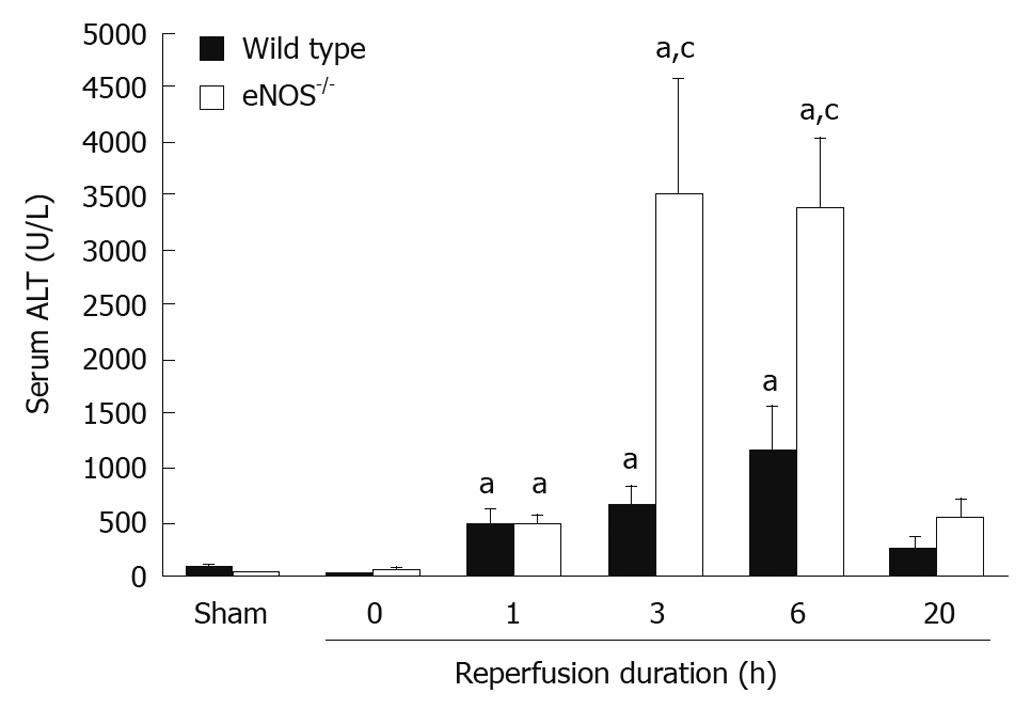Copyright
©2010 Baishideng Publishing Group Co.
World J Gastroenterol. Dec 28, 2010; 16(48): 6079-6086
Published online Dec 28, 2010. doi: 10.3748/wjg.v16.i48.6079
Published online Dec 28, 2010. doi: 10.3748/wjg.v16.i48.6079
Figure 1 Multifaceted hepatic ischemia-reperfusion injury.
Kupffer and endothelial cells produce cytokines and chemokines, recruiting neutrophils that further accentuate injury. EC: Endothelial cell; KC: Kupffer cell; ATP: Adenosine triphosphate; TNF: Tumor necrosis factor; IL: Interleukin; ICAM: Intercellular adhesion molecule; VCAM: Vascular adhesion molecule; PAF: Platelet activation factor; LTB4: Leukotriene B4; GMS-CSF: Granulocyte macrophage colony stimulating factor; INF: Interferon; ROS: Reactive oxygen species (Courtesy of Dr. Joan Rosello-Catafau, Barcelona, Spain).
Figure 2 Increased liver injury as assessed by serum alanine aminotransferase in endothelium-derived nitric oxide synthase knockout mice compared with their wild type controls.
aP < 0.05 vs sham-operated controls. cP < 0.05 vs time-matched wild type control. ALT: Alanine aminotransferase; eNOS: Endothelium-derived nitric oxide synthase (Courtesy of Dr. Ianes N. Hines, Chapel Hill, NC).
Figure 3 Decreased apoptosis indicated by TUNEL staining in patients treated with inducible nitric oxide compared to controls (Courtesy of John D.
Lang, MD, Seattle, WA). aP < 0.05. iNO: Inducible nitric oxide.
- Citation: Siriussawakul A, Zaky A, Lang JD. Role of nitric oxide in hepatic ischemia-reperfusion injury. World J Gastroenterol 2010; 16(48): 6079-6086
- URL: https://www.wjgnet.com/1007-9327/full/v16/i48/6079.htm
- DOI: https://dx.doi.org/10.3748/wjg.v16.i48.6079















